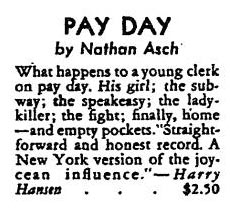On June 16, hundreds of James Joyce fans will gather on the steps of Philadelphia’s Rosenbach Museum and Library to partake in its annual celebration of Bloomsday, the day on which protagonist Leopold Bloom made his “odyssey” through Dublin in Ulysses. While this epic novel is celebrated worldwide—it was voted best English-language novel of the twentieth century by Random House’s Modern Library division—it’s also contentious, deemed by some as unreadable, incomprehensible, and, in the March 27th London Telegraph, first on the list of “Not the 50 books you must read before you die.” In fact, after its publication in France in 1922, it was banned throughout the English-speaking world under charges of obscenity.
“Censorship is a huge factor in the history of Joyce’s reception and also a factor in why he became so important,” says English graduate student and Joyce scholar Václav Paris.
In a paper that won the English department's Nancy Rafetto Leach P. Sweeten Prize for best graduate essay in American Literature, Paris posits that the censorship battle by another banned—but far more obscure—novel called Pay Day, published in 1930, may have helped pave the way for Ulysses’ legal acceptance in the U.S. He came upon this connection serendipitously, while searching for a copy of Pay Day to read for his course on modernist American literature. The only one available was part of Van Pelt Library’s collection of books and papers owned by writer Theodore Dreiser.
“You can really learn about the nature of a certain type of literature by looking at its encounters with law and public perception.”
– Václav Paris
“I went to read it in the library’s Rare Book room, and I don’t think anyone had opened it since 1930,” Paris exclaims. As he paged through it, an old letter fell out. It was from the publisher of Pay Day, who was requesting Dreiser to write a testimonial in favor of the novel for use in its 1930 trial over obscenity charges.
Paris, who hadn’t known the book had ever been censored, discovered parallels between it and Ulysses. Pay Day’s author, Nathan Asch, seemed to have been influenced formally by Joyce, creating a narrative that takes place over a single day and is mostly told through first-person stream of consciousness. Like Ulysses, Pay Day was also candid about the body and about sex. Historical similarities abounded as well. The complaint against Asch’s book was levied by John Sumner of the New York Society for Suppression of Vice—the same man who advocated for the ban against Ulysses when it was published in serial form in a literary magazine more than a decade earlier. It was defended by Morris L. Ernst, the same lawyer who would defend Ulysses two years later. And Dreiser, who never did vouch for Pay Day, did comply when approached for a defense of Joyce’s book.
“I started thinking it was a trial run,” Paris explains. “The value of this little-known book for Joyce scholars could be relatively high because it provided a model for the Ulysses case. By comparing them you can better understand the issues at play, and how Morris Ernst came to carve out an exceptional legal space for Joyce in 1933.”
Set on the night of August 22, 1927, Pay Day dramatizes the Boston execution of Ferdinando Nicola Sacco and Bartolomeo Vanzetti, anarchists accused of the robbery and murder of a payroll master and his guard. The novel overtly espouses socialist politics and criticizes both the corruption of the U.S. legal system as well as the hypocrisies of prohibition. “It’s tempting to link suppression of the book,” Paris says, “to the suppression of the popular movements to save Sacco and Vanzetti.”
In the end, the ban on Pay Day was never lifted. “It was such a minor book,” Paris says, “and it’s telling that it was only reprinted after the fall of the Berlin Wall as a sort of historical curiosity. Technically it might still be a banned book, but no one cares anymore.”
By the time Ulysses came to trial, however, the U.S. was well into the Depression and many of the states of Central and Eastern Europe were plagued by dictatorships, ethnic discrimination and class tensions. Socialism and communism, Paris explains, had become much more of a force within the criticism of literature, and defenders of Ulysses, such as literary and social critic Edmund Wilson, began reading it as sympathetic toward the working class. The case for Ulysses was taking place on different grounds than those on which the novel was written—during the climax of literary high modernism. This work, exemplified by writers like Joyce and Virginia Woolf, espoused literature and art for its own sake and in opposition to politics and mass culture. It celebrated formal experimentation and textual complexity.
“The people who attacked Ulysses said that no one understood it; it’s high art and not socially important,” Paris says. “The case being made for it in 1933 was that it advocates for every man and was needed at the time. It was argued that it does this because of its obscenity. It was frank about the body—and in the end, we are all bodies.”
Indeed, when Judge John Woolsey lifted the ban on Ulysses, rather than praise its aesthetic merit, he proclaimed that: “Ulysses is not an easy book to read or to understand,” and that while its effect “undoubtedly is somewhat emetic, nowhere does it tend to be an aphrodisiac.” He did, however, conclude that the novel was “a somewhat tragic and very powerful commentary on the inner lives of men and women.”
Pay Day, Paris argues, helped to shift the interpretation of Ulysses away from conceptions about the elitism or irrelevancy of 1920s high modern aesthetics to the social realism valued in the 1930s. “There’s a lot more going in these censorship cases than most people think,” he says. “You can really learn about the nature of a certain type of literature by looking at its encounters with law and public perception.”



